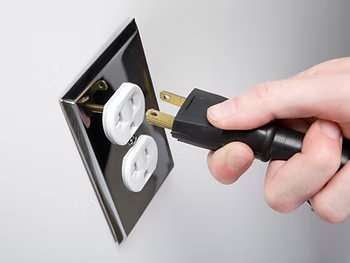Enjoy a Safe Fourth of July
- Smart Choices
- Jun 18, 2023
- 2 min read
Updated: Jun 26, 2023
There are many Independence Day traditions—picnics, special foods, spending time on the water and games—but perhaps the most popular is fireworks. Read on for fireworks stats and safety tips.

July 4 Independence Day celebrations wouldn’t feel authentic without some sort of fireworks display. Many Americans enjoy professional, public displays of awe-inspiring pops and bursts of colors lighting the skies, but others create their own fireworks displays. If you plan to purchase and use fireworks this year, take safety precautions. Even if you just stick with what we think of as "safer" options, such as sparklers, similar safety precautions apply.
Fireworks Stats
Fireworks start an estimated 19,500 fires and send over 9,000 people to the emergency room each year in the U.S.
In 2021, U.S. hospital emergency rooms treated an estimated 11,500 people for fireworks related injuries; over half of those injuries were to the extremities and 35% were to the eye or other parts of the head.
The risk of fireworks injury is highest for males (70%) and for people age 25-44 (34%). However in a close second, children under the age of 15 experience 31% of all accidents.
Sparklers reach temperatures ranging from 1200 to 2000 degrees F, far above these common burn dangers: glass melts at 900 degrees, wood burns at 575 degrees, cakes bake at 350 degrees and water boils at 212 degrees. For that reason, young children, who most likely won’t understand the dangers of touching them, should not be allowed to handle them.
About 25% of all fireworks injuries were caused by sparklers in 2018.
Fireworks Safety The safest way to enjoy fireworks is to attend a public display put on by professionals, rather than creating a display.
If you do use fireworks, however, read and follow these safety suggestions:
Never allow young children to handle fireworks.
Never use fireworks after ingesting alcohol or drugs.
Older children should use them only under close adult supervision.
Anyone using fireworks or standing nearby should wear protective eyewear and clothing.
Never light them indoors.
Only use them away from people, houses and flammable materials.
Only light one device at a time and maintain a safe distance after lighting.
Never ignite devices in a container.
Do not try to re-light or handle malfunctioning fireworks.
Soak unused fireworks in water for a few hours before discarding.
Keep a bucket of water or a hose nearby to fully extinguish fireworks that don't go off or in case of fire.
Fun Substitutes for Fireworks
A few ideas to get into the patriotic spirit, without fireworks:
Substitute glow sticks, bubbles, confetti, colored silly string and noise makers that can add a celebratory feel with little risk of injury.
Set up a screen and projector for an outdoor movie night.
Set up a table to make a patriotic craft together.
Throw a birthday party for the USA (and don’t forget the birthday cake).
Sources: Consumer Product Safety Commission, National Fire Protection Association, Mayo Clinic Network, National Safety Council




Comments